We aren't guaranteed much as adults, but if there's one thing we can count on, it's that our bodies change as we get older. For men, that's especially true. One day you're lifting heavy weights and nailing your cardio regimen without having to stretch before or after. And then, in what seems like the blink of an eye, you start to slow down a little. You begin to notice aches and pains in places that weren't there before. You can't just go out for a night on the town, imbibe until your heart is content, and expect to wake up refreshed.
And while headaches and achy joints can be treated with ice and anti-inflammatory medicine, other aspects of aging aren't as easy to treat. You've probably guessed at this point what we're talking about: erectile dysfunction, or ED for short. When brought up to most men, those are two words that cause a guttural reaction of fear and trepidation.
While just about every man fears ED, millions suffer from it - almost 10% of the male population between the ages of 40 and 70. So, if you're beginning to have trouble performing in the heat of the moment, you're definitely not alone. You may be experiencing symptoms like:
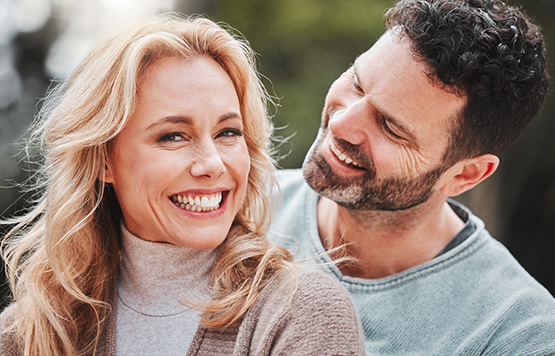
Trouble Achieving an Erection
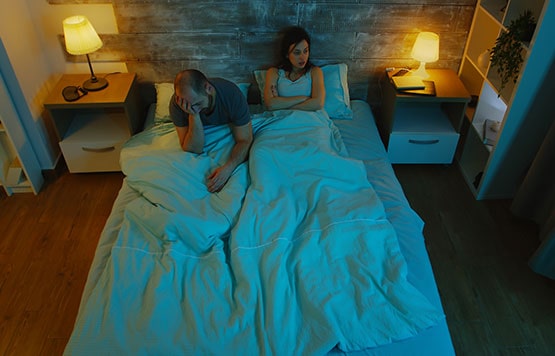
Trouble Maintaining an Erection
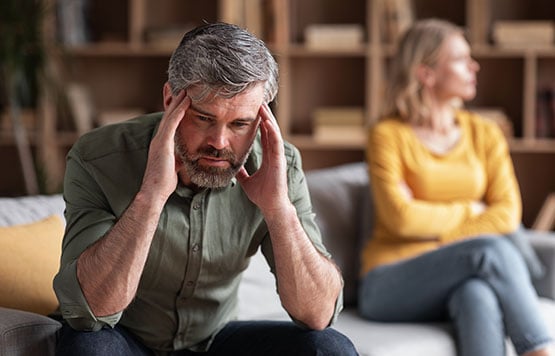
Lower Libido

Less Sexual Pleasure
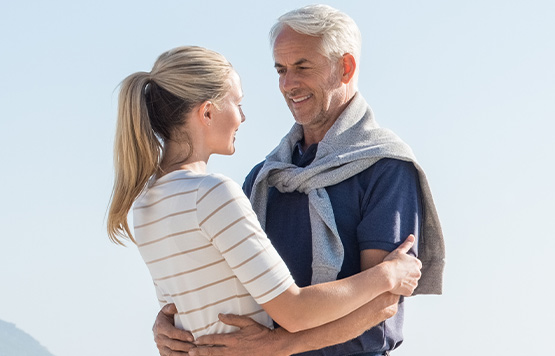
Premature Ejaculation

Inability to Achieve Orgasm
However, at Elite Healthcare Physical Medicine, we understand that stats won't do anything to address the stress and anxiety you're facing in relation to erectile dysfunction. You need a viable solution - a science-backed treatment that doesn't require strange pills or invasive surgeries. As a fully integrated multidisciplinary clinic in Mount Pleasant, we have what you've been searching for: softwave therapy for ED in West Ashley, SC.
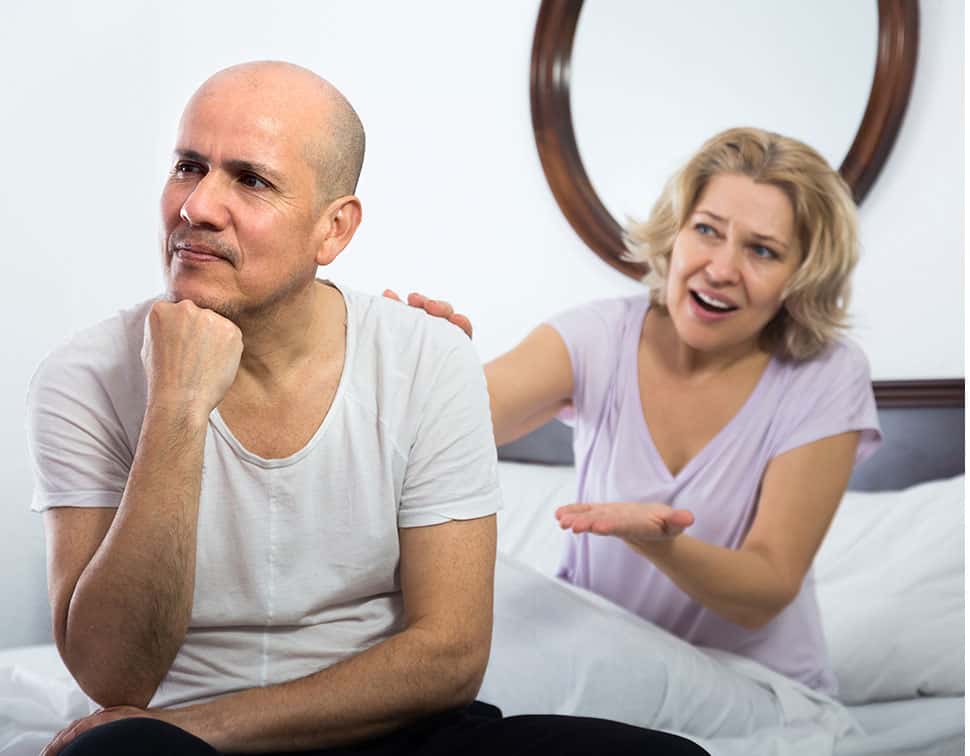
To fully grasp the benefits of using soft wave therapy for erectile dysfunction, you must first understand what causes ED to begin with. Put simply, erectile dysfunction is the inability to get an erection and keep it throughout sexual intercourse. You should know that it's not uncommon if you have erection trouble. However, if your inability to "get it up" becomes a common occurrence, you may be suffering from ED.
Erectile dysfunction doesn't just affect your penis - it also affects your wellbeing and relationships. It can lower your confidence, cause a large amount of stress that affects your ability to work, and may even cause contention with your partner.
You hear it all the time - as men get older, they often lose the ability to get erect. But why? As men age, the blood vessels in their penis start to fill up with micro-plaques, causing them to deteriorate. When these blood vessels deteriorate, it's more difficult for them to have steady blood flow. And that's the key to ED - having the constant blood flow to get and keep an erection. That's where the science-backed effectiveness of Softwave therapy swoops in to save the day.
Shockwave technology has been around for decades. It has been used at the highest-level research and medical facilities like the Cleveland Clinic and Memorial Sloan Kettering. However, Softwave therapy is a more refined, effective way to treat erectile dysfunction and also advance tissue healing.
Softwave therapy works by using electrohydraulic spark gap technology at its core. Its innovative design features a parabolic reflector applicator that produces very effective, low-intensity shock waves that are unfocused. Elite Healthcare Physical Medicine's Softwave applicator spreads energy to a large area of both superficial and deep tissue, creating a biological response that kickstarts your body's natural healing process.
For men suffering from ED, it is a revolutionary breakthrough treatment that doesn't require harmful surgeries or side effects from pills. In fact, it has been FDA approved for many uses, including improved blood flow, which is often the root cause of erectile dysfunction.
Book Appointment

Unlike some more traditional treatment options, Softwave therapy gets right to the crux of the ED issue. It uses shock wave technology on a cellular level, helping to naturally heal body parts, like the penis. Some of the most common benefits of Softwave therapy include:
Additionally, Softwave treatments don't require much prep, don't have any sketchy side effects, don't require any numbing agents or anesthesia, and result in little-to-no recovery time. Sound too good to be true? Contact Elite Healthcare Physical Medicine today to learn just how effective Softwave therapy is for our patients!

Softwave therapy works by using efficient, effective shock waves that cause biological regeneration processes that heal your body using its own healing factors. It works like this: Softwaves are created via a high-energy electrical discharge in water. The voltage is discharged between the plus and minus tips of an electrode. The spark gap or arching causes an equalization of voltage between the opposing tips of the electrode, which causes a hot plasma bubble. This bubble explodes and distributes in every direction, compresses the surrounding water, and generates a pressure > 10 MPa within nanoseconds.
To sum up, Softwave therapy uses low-intensity, unfocused energy that is delivered by a reflector in parallel waves. These waves help open up the blood vessels in your penis, allowing more blood to flow. At Elite Healthcare Physical Medicine, our team of expert physicians will develop a personalized Softwave therapy plan based on your body and needs. With the right number of treatments, you should be able to achieve and maintain firm erections as you did in your prime.

A Softwave therapy procedure averages 10-15 minutes but may be longer depending on treatment area and diagnosis. A gel is applied to the surface area to be treated. The applicator produces pulses as the clinician moves around the treatment area. During therapy, communication with your provider is necessary to identify treatment areas and monitor progress.
Once treatment is over, you may resume your normal day-to-day activities. In fact, most patients can have Softwave therapy while on their lunch break. You don't have to worry about recovery time, side effects, or any downtime at all.

More than 50% of men will experience erectile dysfunction at some point in their lives. If you're over the age of 30, have been suffering from ED, and don't want to rely on pills or surgery, Softwave therapy may be for you. That's doubly true if you've tried traditional treatments like Viagra and even surgery but didn't get the results you hoped for. Many academic studies about shockwave therapy for ED state that this revolutionary technology is successful where PDE5 inhibitors fail.
In fact, many urologists consider Softwave therapy the most promising ED treatment on the market. The truth is, even if you're not battling ED, men can use Softwave therapy as a preventative way to keep the magic flowing in the bedroom. Some of the key reasons to choose Softwave therapy over less effective, traditional treatments include:
If you're curious why Softwave treatments are so popular for ED, the answer is simple. Prescription drugs like Cialis and others that "treat" ED often come with less-that-savory side effects. At best, these effects are just something patients have to deal with. At worst, they can disrupt your day-to-day schedule and may prevent you from enjoying a healthy life. Sure, some men swear by the "little blue pill," but most guys aren't aware of the hidden risks with drugs like Viagra. The following side effects can be common in both short and long-term circumstances:
If you're suffering through erectile dysfunction, it's crucial to understand why it's happening. The primary reason for ED is a lack of blood flow to the penis, which makes erections difficult to get and keep. Rather than relying on prescription and gas station pills for a quick fix, more men are using softwave ED treatment in West Ashley, SC for an all-natural solution minus the side effects. With Softwave therapy, you don't have to live with ED, and you don't have to suffer from scary side effects from popping too many pills.
Book Appointment
Softwave therapy is often a more effective solution for men with ED than similar but less effective treatments using pressure waves. Softwave therapy from Elite Healthcare Physical Medicine uses acoustic pulses or unfocused shockwaves with fast and steep rise times and high positive pressure. Our unfocused wave design makes it possible to spread energy to a larger area, which affects deep and superficial tissue. By targeting a larger area, a more potent biological response is often achieved, initiating your body's natural healing factors.
By comparison, radial pressure waves use acoustic pneumatic pulses with low steeping effects, slow rise times, and large negative pressures. Radial waves are shallower than the shockwaves used in Softwave technology and focus energy and pressure at the surface of the applicator.
Here's a quick breakdown of the differences between softwave therapy for ED in West Ashley, SC, and radial pressure waves:

If you're new to the world of Softwave therapy, chances are you've got some lingering questions you need answered. We'll do our best to answer a few of those questions here for your convenience.
Q. Has the FDA approved softwave therapy for ED in cityname, state?
A. Yes - Softwave therapy is FDA 510(k) approved for:
Q. Is softwave therapy painful?
A. Softwave therapy does not require surgery or any invasive form of treatment. With that said, some patients describe minimal discomfort or pain during our softwave treatments. Should this occur, your medical specialist will make necessary adjustments. Usually, patients do not have to endure any pain at all and only experience a pulse or tapping feeling on their skin.
Q. How long is a Softwave treatment session?
A. An individual session only takes five to fifteen minutes. It's typically recommended that patients have treatment once a week for three to five weeks. The length and frequency of your Softwave therapy sessions will be determined after you visit our medical clinic for a comprehensive evaluation.
Q. How long does it take for Softwave therapy to work?
A. Every patient we treat is different, and as such, will have different treatment recommendations. Often, patients notice the results of Softwave therapy after the first session. However, for the longest-lasting effects, most patients need between three and four treatments, with a week of non-treatment after every session.
Q. Can I combine Softwave therapy with other treatments from Elite Healthcare Physical Medicine?
A. It's hard to give a definitive answer to this question since every patient is different. It's important for you to have a full evaluation to determine the scope of your needs and the appropriate therapies. However, Softwave therapy often works very well with other treatments. In fact, other therapies offered at our medical clinic like massage therapy and chiropractic care can make Softwave treatment even more effective.
Remember - our team at Elite Healthcare Physical Medicine is always happy to answer any questions you may have about ED or our ED treatments. Give us a call today - it would be our pleasure to get to know you better!
Unlike some wellness clinics, our experienced providers work together to optimize treatment for men suffering from ED. We always strive to make sexual wellbeing an accessible part of your everyday lifestyle.
That's why, at Elite Healthcare Physical Medicine, our mission is simple: to correct the root cause of your erectile dysfunction by taking a comprehensive, total body approach to healing and treatment. We want to address your ED problem without having to resort to chemical-based medications or unnecessary surgeries. Instead, we focus on all-natural, effective solutions like shockwave therapy for ED in West Ashley, SC.
By discovering what's best for each person's individual body and needs, we can help create a healthier future for those in our community through our holistic physical medicine practices. Contact our office to learn more about Softwave therapy and how we can solve the underlying causes of your unique ED situation.
Book AppointmentCHARLESTON, S.C. (WCBD) — Charleston city leaders are moving forward with plans to redevelop a shopping center on Sam Rittenburg Boulevard in West Ashley.The City of Charleston’s Design Review Board gave conceptual approval on Monday to a new Publix grocery store and retail space that will be built in the Ashley Landing Mall shopping center where a Publix currently sits.The existing Publix is located closer to Sumar Street and was built in the 90s. The new plans are to move the grocery store to the opposite side of ...
CHARLESTON, S.C. (WCBD) — Charleston city leaders are moving forward with plans to redevelop a shopping center on Sam Rittenburg Boulevard in West Ashley.
The City of Charleston’s Design Review Board gave conceptual approval on Monday to a new Publix grocery store and retail space that will be built in the Ashley Landing Mall shopping center where a Publix currently sits.
The existing Publix is located closer to Sumar Street and was built in the 90s. The new plans are to move the grocery store to the opposite side of the property closer to Charlestowne Drive and add new retail and restaurant space next door.
There is currently a 130,000-square-foot building in that spot, which includes businesses like Dollar Tree and Big Lots inside. The Design Review Board also moved forward with the approval of a partial demolition of the shopping center, which includes these businesses. Robert Summerfield, the city’s Director of Planning, Preservation and Sustainability, said the leases for the businesses were not renewed in preparation for the redevelopment of the area.
Summerfield added that the plans to revamp the shopping center are in line with the city’s goals to revitalize parts of West Ashley.
“This is right in line with the ideas for the plan, it keeps a major shopping experience with the grocery store right there — keeps it anchored in the community and in that shopping center for those neighborhoods in that area,” he explained.
However, Suzanne Germroth, who lives in Charleston, said she is concerned about the neighborhood losing the businesses currently there because of the project.
“A lot of people rely on these discount stores to maintain their livelihood and what they can afford,” she said. “And I don’t understand why this perfectly wonderful building here has to move across the street.”
Summerfield said the current Publix will stay open until the new one is complete, and the plans for what will happen with the existing Publix building have not been decided.
“Publix has actually done this in a number of places in the markets that they work in. You know they’ll close the store one night in its current space and they’ll open the next morning in the new space,” he said. “In the old space, that again will be I believe in phase two of their development plan.”
This was the first time the conceptual plans for the project went in front of the Design Review Board. The next step for the project will be a preliminary review.
One of the Charleston region’s major health care providers plans to set up its first outpost on a former West Ashley superm...
One of the Charleston region’s major health care providers plans to set up its first outpost on a former West Ashley supermarket site.
Trident Medical Center LLC, a subsidiary of Nashville-based HCA Healthcare, bought the property where Food Lion once operated at St. Andrews Boulevard and Sycamore Avenue from Lowcountry developer Ben Gramling and business partner Mikell Harper for $11.45 million in late November.
The future use hasn’t been determined, but the acquisition marks the regional medical provider’s continued expansion across the Lowcountry.
“The purchase represents our continued commitment to creating more access to much-needed health care services,” said Landon Smith, Trident’s chief operating officer and interim CEO. “We will announce the specific plans for the property at a future date.”
In June, Trident opened a free-standing emergency room on Folly Road on James Island before providing details in August for a planned $278 million, 50-bed hospital and full-service emergency room on Johns Island. The site between Maybank Highway and Cane Slash Road also has room for an additional 100 beds for future expansion.
Trident began acquiring land in 2020 and paid $20 million for about 56 acres along Zelasko Drive.
In addition to its namesake flagship hospital in North Charleston, Trident also operates several other care sites in the Lowcountry.
Historically, dramatic interest rate hikes hit the residential housing market in 2023 like the Tasmanian Devil, upsetting both supply and demand and contributing to sagging month-over-month home sales all year. Yet here’s a couple of cheery facts that should allow interest rates to sleep better at night:
Today’s Fed Fund rate of 5.5% is a half-point lower than the average of the past half-century. Sure, that includes the inflation-strangling rates of the 1980s, but it also includes the free-money giveaways of the last couple of years.
Likewise, the average mortgage rate since 1973 has been a half-point higher than today’s, just under 7%. And with the Fed’s recent announcement of rollbacks in 2024, it’s time to quit blaming the payment schedule for slow sales, dropping commissions and your cousin’s gout.
Indeed, the runup in interest rates narrowed the already thin range of affordability in the Charleston real estate market in 2023 and renewed the shine on renting for potential buyers and on sitting tight for potential sellers because, as Albert Einstein demonstrated, everything is relative, including mortgage rates, and compared to the beauty pageant rates of the past few years, average is ugly.
What Lies Ahead for Charleston Real Estate?
With stagnant sales and moderated price hikes in the rearview mirror, what do the experts foresee for 2024 and beyond? The good news is that they foresee good news – for buyers and sellers. Somewhat lower rates, somewhat higher prices, somewhat better sales, and significant gains in the long-term for homeowners whenever they catch the homeownership bus.
Now you’re asking, why are lower rates and higher prices good news for buyers? Don’t they cancel each other out? Good question; thanks for asking. Lower rates may lure existing homeowners back into the market to trade up or down. In addition, a one percentage point drop in the mortgage interest rate is more impactful than a few percentage point hikes in home prices. As David Slade pointed out in his Sunday Dec. 17 Post and Courier column, a family prepared to pay $2,000/month for their mortgage can buy a $300,000 house today, but a $335,000 house if mortgage rates drop to 6%. That’s an 11% boost in buying power, about twice the increase expected in home prices in 2024.
If rates continue declining as expected – with the caveat that nothing is less certain than a prediction about the economy – adjustable rates and refinancing will reduce monthly payments even as home values rise. For today’s buyers, 3-2-1 buydowns and 3-year ARMs can be money-saving options as rates fall and drag payments down with them.
These predictions are based on ordinary supply and demand, as opposed to the bubble of the mid-2000s that eventually burst. The inventory of homes for sale recently crossed the 3,000 mark in the Charleston area, about half of what would be needed to slake demand. It remains a seller’s market going into the new year, though less so than two years ago. Developers can’t keep up with the influx to the area of 10,000 people annually, so that problem will persist. The National Association of Home Builders predicts challenges with securing land, skilled labor, and materials, which will prevent them from building enough residential units to meet nationwide demand at least through the decade, leading to a sellers’ market across the country for the foreseeable future.
Nowhere is that more certain than Charleston, with its ballooning population and water-hemmed land masses.
Interest Rates, Taxes and Insurance
For the coming year, the status of mortgage rates will be the primary determinant locally of a loosening market, says Drew Grossklaus, sales director and broker-in-charge for William Means Real Estate’s East Cooper office, and the president of the Charleston Trident Association of Realtors.
“If the interest rate comes down, the supply-demand curve should be better, and we’ll see increased inventory. If we see 5% again on the interest rate, we could have a nice increase in sales next year,” he said. It would take a real softening in the economy for mortgage rates to get quite that low, and few economists are predicting it, but it’s something to dream about.
For luxury buyers, mortgage interest rates have not been a wild card because sales on Kiawah, Seabrook, and Sullivan’s often involve vacation homes and tend to be done in cash. Homeowner’s insurance can play a role, as older homes on slabs near the water, like much of the inventory on Seabrook, can carry insurance costs of $10,000 on a $1 million property, says Ryan Straup, sales executive and Realtor at Seabrook Island Real Estate.
While homeowner’s and flood insurance can be burdensome, they are a drop in the bucket in the second-home luxury market, where expensive houses attract big tax assessments. Straup had clients who were moving from Maryland and paying $25,000 in taxes on a $1 million home. On John’s Island, they could get a similar house for $500,000 and pay $1,855 if they lived there.
The luxury market is often a horse of a different color. Prices skyrocketed this year, with record-breaking amounts fetched for downtown and Mt. Pleasant properties, including the April sale of 100 Haddrell St. on Shem Creek for just under $15 million. Dozens of upscale properties sold for more than $4 million this year in areas like Sullivan’s Island, Daniel Island, Mt. Pleasant’s Old Village and on the peninsula South of Broad. Whether that tide ebbs depends more on individual circumstances than larger market forces.
For the rest of the market, real estate professionals are awaiting spring, that time of rebirth when Cupid’s arrow strikes lovers’ hearts. But more importantly, it’s when houses begin going on the market in droves. Combined with some rate-cutting by the Federal Reserve, many agents expect that is when things will shake loose.
“I’m telling my clients to get ready. I believe more inventory is going to drop in ’24,” said James Badia, Realtor and broker associate at Pam Harrington Exclusives. For agents like him working on upscale developments on Kiawah and Seabrook, there is little new development to work with. Houses go up for sale because homeowners from out of the area who bought here to be near the beach, or their grandkids have either tired of the beach or aged out after 20 years and are ready to go elsewhere. Because second homes are not necessities, Badia’s clients might wait five years for the right fit.
Should You Wait to Buy or Jump in Now?
Ordinary buyers might also take stock before buying for some different reasons. They may wait for interest rates to fall for that big bump in affordability.
Another reason for potential property buyers to wait is politics. This is particularly true of investors, more than those buying their own homes. The coming year is a presidential election year, “which keeps some people sitting on the sidelines to wait and see which candidate wins so then they can make their real estate and other investment decisions accordingly,” said Leslie Turner, co-owner of Maison Real Estate.
One homebuying cohort that probably won’t wait to purchase is those seeking refuge from the country’s cold, high-tax, high-traffic parts. For them, the savings begin accruing the moment they come down to this region, which remains lower in cost than the big cities for now. A median-priced house in Boston and New York costs roughly $800,000, and in Los Angeles, it costs $1,150,000, nearly three times the median Charleston-area home. Add the impact of lower real estate taxes, and it’s easy to see why some states seem to be emptying into the Lowcountry.
Buying to Live More Than to Profit
Moreover, says Grossklaus, “Life doesn’t stop.” Families need to move for a variety of reasons – they’re growing, or the rent is doubling, or the building is being sold, or they’ve grown weary of the daily commute, or… whatever.
“If you really need a house and interest rates remain high, you can always refinance later,” said Badia. “If the perfect home comes for you now, don’t wait.” The primary two reasons to own a home are to establish family stability with roots in a community and to make payments for shelter to yourself instead of to a landlord, neither of which is affected by momentary market conditions.
Real estate experts advise buyers to get into the market when they can because whatever the macroeconomic conditions are, Charleston real estate will likely appreciate for the foreseeable future. Inflation, recessions, and ephemeral gyrations in the real estate market don’t change Charleston’s good weather, ample recreational activities, culture, history, and proximity to beaches and the ocean.
“It’s hard to find what Charleston has to offer, and those things are not changing,” said Grossklaus. But he admits that the region has some work to do to accommodate all the new residents and residences.
“It means addressing mass transit and being insightful and thoughtful about housing in Charleston,” he said. “Affordable housing needs to be addressed. We will have demand; the thing is to keep up that supply.”
Looking for Charleston’s best Chinese food? Sure, there’s plenty of Chinese-American spots to choose from, but where can you get something worth your money? From a restaurant with dishes from all over Asia to spots dedicated to Sichuan, there’s a small range of establishments offering Chinese cuisine, but they pack in a lot of flavors in the Lowcountry.Look here for our top picks. Read MoreEater maps are curated ...
Looking for Charleston’s best Chinese food? Sure, there’s plenty of Chinese-American spots to choose from, but where can you get something worth your money? From a restaurant with dishes from all over Asia to spots dedicated to Sichuan, there’s a small range of establishments offering Chinese cuisine, but they pack in a lot of flavors in the Lowcountry.
Look here for our top picks.
Eater maps are curated by editors and aim to reflect a diversity of neighborhoods, cuisines, and prices. Learn more about our editorial process.
North Charleston restaurant Jackrabbit Filly is like if someone said, “Make Chinese-American comfort food, but make it chef-y.” Owners Shuai and Corrie Wang opened the restaurant after years of running acclaimed food truck Short Grain. The menu has touches of Chinese and Japanese. There’s Sichuan dry pot, Mama Wang’s fried rice with lap cheong, and a highly-sought-after chirashi bowl. The restaurant recently added a dim sum brunch.
Looking for a dim sum dinner or lunch in the Lowcountry? Hit up Dragon Palace on Daniel Island for pork buns, shu mai, dumplings, and sesame balls. The interiors are retro fancy with ornate wood carvings and plenty of red. Dragon Palace also offers classics like chow mein, cashew chicken, and egg drop soup.
King BBQ offers Chinese barbecue with a Carolinas influence. The menu centers on smoked meats — five-spice duck, char siu ribs, ginger scallion kielbasa, and rotisserie chicken — and all the ways to serve those proteins — on a sandwich, rice, or noodles. Don’t miss the crispy shrimp toast sliders.
Downtown restaurant Beautiful South serves American-style takeout Chinese classics like General Tso’s chicken and Mongolian beef, but there’s also Cantonese roasted meats and Hainanese chicken. Try one of the inventive cocktails, such as the Love Your Enemies, which is a tequila and mezcal milk punch with a hint of oolong tea.
Eastside Chinese spot Hot Mustard may not be winning any culinary awards any time soon, but the restaurant’s takeout and delivery game is on point. Compared to other Americanized Chinese restaurants, Hot Mustard seems the most generous with the portions and the meat-to-noodle ratio. The pork lo mein or the sweet and sour chicken are reliable choices. This is eat-out-of-the-box-type of Chinese food — best served while sitting on the couch, watching Netflix, and in your pajamas.
Downtown restaurant Xiao Bao Biscuit (XBB) has been around since 2012. The kitchen draws from different regions across Asia and delivers on some solid Chinese choices. The mapo tofu is some of the best in town, and the dumplings always satisfy. XBB is usually packed with lively customers looking for Asian comfort foods. Starting during the pandemic, the restaurant began offering takeout.
If you haven’t heard of Old Li’s Restaurant on Savannah Highway in West Ashley, it might be because fans of the Chinese establishment would rather keep it a well-guarded secret. The can’t -miss menu item is the crispy Peking duck, but the oyster pancakes, dumplings, and squirrel fish are worth ordering as well. Old Li’s is BYOB, so plan accordingly.
James Island Sichuan restaurant Kwei Fei has enough peppercorns and punk-rock sensibility to keep any dinner interesting. Owners David Schuttenberg and Tina Heath-Schuttenberg moved from New York to Charleston for another restaurant project, but when that didn’t pan out, the culinary community lucked out when they decided to bring Sichuan flavors to town.
The restaurant usually full of locals enjoying lamb dumplings, spicy noodles, and tingly beef to the soundtrack of loud rock and funk music.
North Charleston restaurant Jackrabbit Filly is like if someone said, “Make Chinese-American comfort food, but make it chef-y.” Owners Shuai and Corrie Wang opened the restaurant after years of running acclaimed food truck Short Grain. The menu has touches of Chinese and Japanese. There’s Sichuan dry pot, Mama Wang’s fried rice with lap cheong, and a highly-sought-after chirashi bowl. The restaurant recently added a dim sum brunch.
Looking for a dim sum dinner or lunch in the Lowcountry? Hit up Dragon Palace on Daniel Island for pork buns, shu mai, dumplings, and sesame balls. The interiors are retro fancy with ornate wood carvings and plenty of red. Dragon Palace also offers classics like chow mein, cashew chicken, and egg drop soup.
King BBQ offers Chinese barbecue with a Carolinas influence. The menu centers on smoked meats — five-spice duck, char siu ribs, ginger scallion kielbasa, and rotisserie chicken — and all the ways to serve those proteins — on a sandwich, rice, or noodles. Don’t miss the crispy shrimp toast sliders.
Downtown restaurant Beautiful South serves American-style takeout Chinese classics like General Tso’s chicken and Mongolian beef, but there’s also Cantonese roasted meats and Hainanese chicken. Try one of the inventive cocktails, such as the Love Your Enemies, which is a tequila and mezcal milk punch with a hint of oolong tea.
Eastside Chinese spot Hot Mustard may not be winning any culinary awards any time soon, but the restaurant’s takeout and delivery game is on point. Compared to other Americanized Chinese restaurants, Hot Mustard seems the most generous with the portions and the meat-to-noodle ratio. The pork lo mein or the sweet and sour chicken are reliable choices. This is eat-out-of-the-box-type of Chinese food — best served while sitting on the couch, watching Netflix, and in your pajamas.
Downtown restaurant Xiao Bao Biscuit (XBB) has been around since 2012. The kitchen draws from different regions across Asia and delivers on some solid Chinese choices. The mapo tofu is some of the best in town, and the dumplings always satisfy. XBB is usually packed with lively customers looking for Asian comfort foods. Starting during the pandemic, the restaurant began offering takeout.
If you haven’t heard of Old Li’s Restaurant on Savannah Highway in West Ashley, it might be because fans of the Chinese establishment would rather keep it a well-guarded secret. The can’t -miss menu item is the crispy Peking duck, but the oyster pancakes, dumplings, and squirrel fish are worth ordering as well. Old Li’s is BYOB, so plan accordingly.
James Island Sichuan restaurant Kwei Fei has enough peppercorns and punk-rock sensibility to keep any dinner interesting. Owners David Schuttenberg and Tina Heath-Schuttenberg moved from New York to Charleston for another restaurant project, but when that didn’t pan out, the culinary community lucked out when they decided to bring Sichuan flavors to town.
The restaurant usually full of locals enjoying lamb dumplings, spicy noodles, and tingly beef to the soundtrack of loud rock and funk music.
After some last-minute funding maneuvers, Charleston approved the terms of a construction contract for a long-awaited bike and pedestrian bridge connecting downtown and West Ashley.It now awaits federal approval before the mayor can sign off on it and work can begin.As construction firms submitted proposals for the project this summer, local leaders became aware that their most recent ...
After some last-minute funding maneuvers, Charleston approved the terms of a construction contract for a long-awaited bike and pedestrian bridge connecting downtown and West Ashley.
It now awaits federal approval before the mayor can sign off on it and work can begin.
As construction firms submitted proposals for the project this summer, local leaders became aware that their most recent cost projections were insufficient.
That’s when the estimate ballooned from $42 million about a year ago to about $74 million today. As a result, city officials had to secure more funding from county, state and federal agencies. In addition to dipping into the city’s hospitality tax funds, the Medical University of South Carolina chipped in too.
In total, the city’s contribution to the project via hospitality tax funds stands at $13 million.
Construction bidders attributed the higher-than-expected cost projections to rising interest rates, as well as increased labor and material costs. The winning bid came in at $73.8 million.
City leaders had considered scaling the project back when the new estimates were calculated but Councilman Mike Seekings said South Carolina Transportation Secretary Christy Hall was determined to find additional help from all levels of government to bring the project across the finish line.
“Secretary Hall put her money where her mouth is,” he said.
With Hall’s help securing an additional $30 million committed from various agencies, the city was able to move forward with a contract with civil contractor, Superior Construction.
Charleston City Council voted 11-1 on Sept. 26 to authorize the mayor to sign off on the contract once it gets approval from the Federal Highway Administration. Councilwoman Caroline Parker voted against the authorization and Councilman William Dudley Gregorie was absent.
If all goes according to plans, the contract will be signed within the next few weeks and design work can begin. Signing the contract locks down a “guaranteed maximum price” from the contractor, which can only fluctuate within a certain percentage of the total project cost. Any additional overrun would need special approval from City Council.
Design is expected to take about one year and construction about three years, said Jason Kronsberg, Charleston parks director and the project manager for the effort.
There should only be minor disruptions to road and boat traffic during construction, he added. It will tie into the existing West Ashley Greenway and cross the Ashley just south of the U.S. Highway 17 vehicular bridges.
Despite the cost estimate struggles, city leaders struck an optimistic tone saying that the project will be transformative for the city.
“It’s a game changer,” Kronsberg said. “Its a significant infrastructure project that will be just as successful as the Ravenel Bridge bike and pedestrian lane when it was first implemented ... If you build it, they will come.”
Councilman Peter Shahid, who is running for mayor, said the project is not only a recreational amenity but also an important piece of the city’s transportation network. It will provide commuters who travel on foot or ride bikes a safe crossing to the city’s employment hub and also could relieve some traffic on the existing vehicular bridges in the same area.
Danielle and Brent Sweatman understand the complicated relationship between sobriety and the food and beverage space. The couple, who have worked in the industry for years, are two years sober.“We knew how it feels to be uncomfortable with limited options and wanted to change that,” said Danielle, who with her husband Brent, opened Sweatman’s Garden — a sodary and fondue Lounge at 90 Folly Road Boulevard in the South Windermere Shopping Center.Brent said they chose the location for a few reasons.&...
Danielle and Brent Sweatman understand the complicated relationship between sobriety and the food and beverage space. The couple, who have worked in the industry for years, are two years sober.
“We knew how it feels to be uncomfortable with limited options and wanted to change that,” said Danielle, who with her husband Brent, opened Sweatman’s Garden — a sodary and fondue Lounge at 90 Folly Road Boulevard in the South Windermere Shopping Center.
Brent said they chose the location for a few reasons.
“We live in West Ashley and have been living in Byrnes Down for about five years. Because we love our community, we wanted to provide a cool hangout spot close to home for both drinkers and non-drinkers.”
Related content: Charleston startup with Hollywood pedigree launches luxury pet brand
Relatd content: North Charleston distillery distributes whiskey statewide for first time
According to Brent, he and his wife were happy to fill a much-needed niche in the community.
“There are so many young people in the area that are becoming part of the sober curious movement and it was important to us to provide an inclusive space for the people that would want to take advantage of it,” he said.
And with the rise of mocktail culture, their timing couldn’t be better. According to research conducted by NielsenIQ, the non-alcoholic beverage sector is expanding rapidly as alcohol consumption declines, with popularity soaring over the past five years — a trend driven by Gen Z and millennials.
An Instagram-worthy experience
When the couple moved into what was Florence’s Lowcountry Kitchen, they were presented with a tabula rasa, enabling Danielle, as she says, “to go wild.”
She transformed plain, white walls into ones with a dark green hue and festooned them with dozens of thriving plants. Quirky and colorful seating areas are Instagram-worthy, like the attractive curved yellow couch which faces tufted lilac chairs and is separated by a ‘70s-era coffee table.
“We set them up to appear like little living rooms,” said Danielle, adding that she loves maximalism and color. “I was inspired by an art-deco, 70s funky vibe,” she said.
The offerings
Brent is no stranger to libation creation, having helped open the King Street Diner known as the Rarebit featuring homemade ginger beer, tonic, sodas and bitters.
“We’re doing 12 different taps, featuring our tonic and ginger beer and additional playful, fun stuff when it comes to our sodas, like plum rose citrus and a delicious habanero fresca sweetened with monk fruit, which is currently getting a lot of love, along with our root beer,” said Danielle.
For an additional $5, customers can add their choice of alcohol, or a cannabis-based infusion to their sodas. Sometimes customers opt for both non-alcoholic and alcoholic beverages in the same evening.
“I’ve seen some of them take a non-alcohol root beer break from drinking,” said Danielle
The couple also decided to offer a limited menu featuring fondue.
“We’re serving savory fondue, like Mediterranean and beer cheese and also offering sweet options like white chocolate and milk chocolate,” said Danielle, explaining that she loves cheese and chocolate, but that they also wanted to make the menu a fun, interactive experience that doesn’t take staff too much time to create. For now, the business employs a total of seven staff members.
As for the future, Danielle said they are working on finding their bearings at the moment. “We were intentionally a little mysterious about being open to see what worked and what didn’t, but we may consider live entertainment in the future, if all goes well,” she said.
Stefanie Kalina-Metzger is a contributing writer for SC Biz News.
